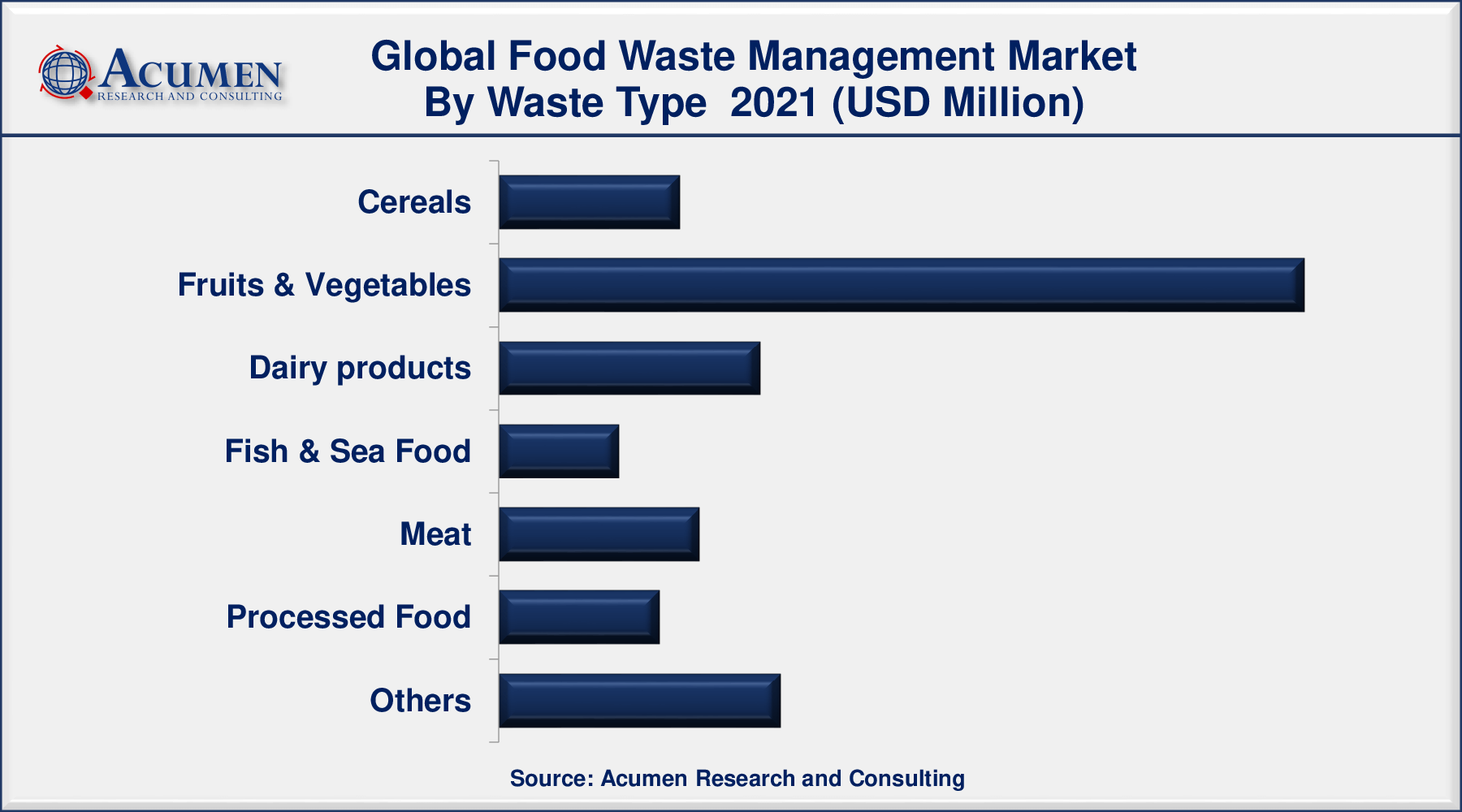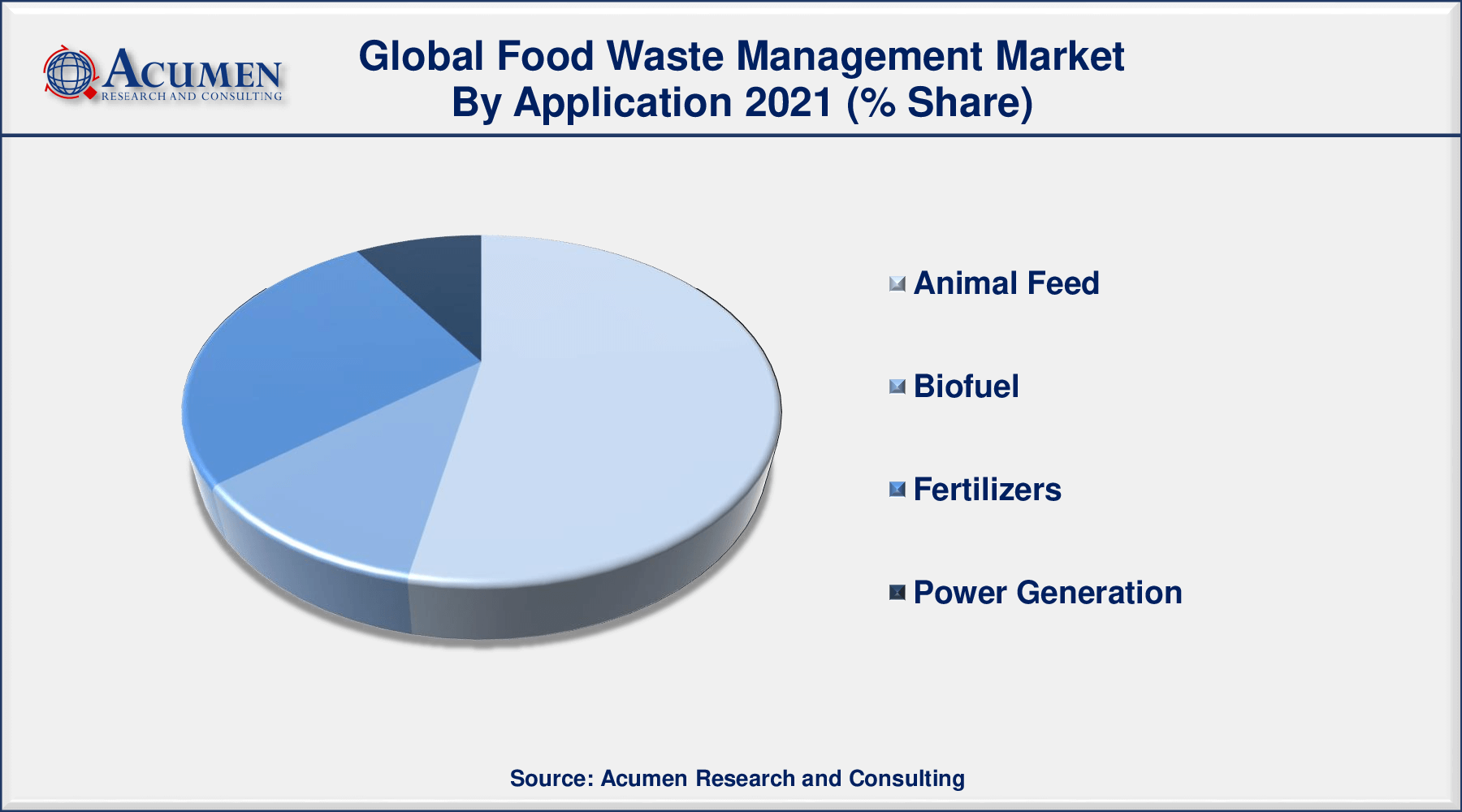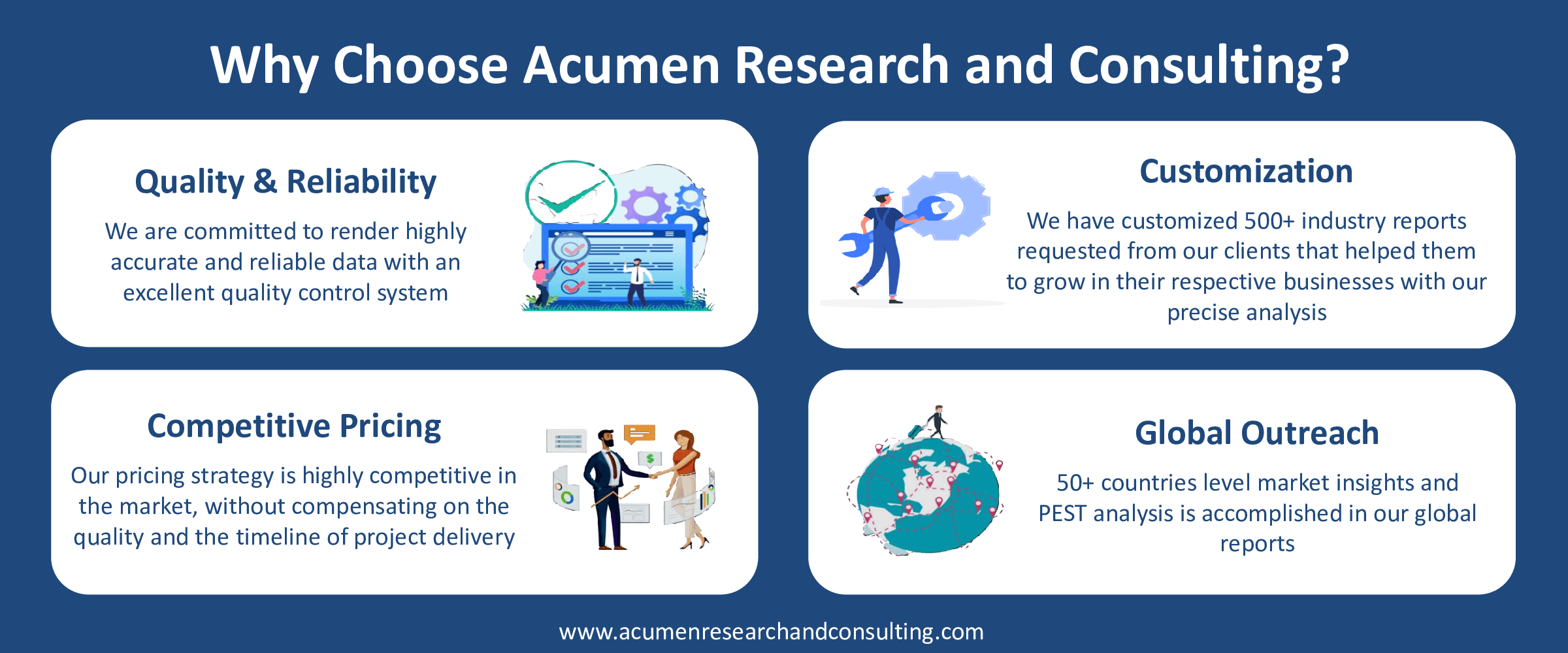Food Waste Management Market Size - Global Industry, Share, Analysis, Trends and Forecast 2022 - 2030
Published :
Report ID:
Pages :
Format :
Food Waste Management Market Size - Global Industry, Share, Analysis, Trends and Forecast 2022 - 2030
Report Coverage
- Industry Dynamics
- Market Size and Forecast Data
- Segment Analysis
- Competitive Landscape
- Regional Analysis with a Niche Focus on Country-Level Data
- High Level Analysis - Porter's, PESTEL, Value Chain, etc.
- Company Profiles of Key Players
- Option to Customize the Report As Per Your Specific Need
Request Sample Report
The Global Food Waste Management Market Size accounted for USD 39,547 Million in 2021 and is estimated to achieve a market size of USD 64,025 Million by 2030 growing at a CAGR of 5.7% from 2022 to 2030. The growing global awareness about food waste has contributed to the rise of the food waste management market size. Rising consumer demand for innovative food products & exotic foods, including tropical fruits, finest coffee, and consumer goods, is anticipated to boost expansion. The rise of global food waste, the need to minimize emissions of greenhouse gases and the increased use of organic food waste in the production of feed and fertilizers are all factors propelling the food waste management market growth.

Food Waste Management Market Report Key Highlights
- Global food waste management market revenue is expected to increase by USD 64,025 million by 2030, with a 5.7% CAGR from 2022 to 2030.
- Based on waste type segment, fruits and vegetables will account for more than 35% of overall market share in 2021
- North America is the dominant region, with over 37% of the market share in 2021, while Asia-Pacific is expected to grow rapidly from 2022 to 2030
- According to food waste management market analysis, the biofuel application segment would grow at a 6.5% CAGR between 2022 and 2030.
- As per the UNEP Food Waste Index Report 2021, approximately 17% of global food production may be wasted, with households accounting for 61% of this waste, food service 26%, and retail 13%.
- Veolia Environnement, Remondis SE & Co. KG, Clean Harbors, Inc., Republic Services, Inc., etc are some of the key players operating in the industry
Growing public concern about the economic and environmental implications, hunger, and conserving natural resources connected with food waste has increased public awareness of wasted food in recent years. As a result, public and commercial efforts to make better use of the current food supply by recovering nutritious and safe foods that would otherwise be wasted have intensified. Food waste is an increasing issue all over the world. According to studies, approximately 40% of produced food is wasted, as are all resources utilized such as water, fuel, electricity, and so on. The food waste management system encompasses waste prevention, treatment, recovery, collection, transportation, and recycling through the use of various management procedures. These methods of waste, which are used in both the business and residential sectors, include composting, landfills, and anaerobic digestion of generated wastes. The surge in food processing wastes generated, which includes dairy food, agricultural, poultry, and marine processing waste, is largely to blame for the increased demand for food waste management.
Global Food Waste Management Market Dynamics
Market Drivers
- The continuing increase in global food waste
- Increasing use of organic food waste for livestock feed and fertilizer production
- Rising demand for reducing greenhouse gas emissions
- Government laws and standards are strict to reduce food waste.
- Rapidly expanding food service industry
Market Restraints
- Environmental harmful landfill and incineration procedures
- High production process costs
Market Opportunities
- The growing desire for generating an alternate source of energy
- The emergence of waste disposal technologies
Food Waste Management Market Report Coverage
| Market | Food Waste Management Market |
| Food Waste Management Market Size 2021 | USD 39,547 Million |
| Food Waste Management Market Forecast 2030 | USD 64,025 Million |
| Food Waste Management Market CAGR During 2022 - 2030 | 5.7% |
| Food Waste Management Market Analysis Period | 2018 - 2030 |
| Food Waste Management Market Base Year | 2021 |
| Food Waste Management Market Forecast Data | 2022 - 2030 |
| Segments Covered | By Waste Type, By Process, By Source, By Application, And By Geography |
| Food Waste Management Market Regional Scope | North America, Europe, Asia Pacific, Latin America, and Middle East & Africa |
| Key Companies Profiled | Veolia Environnement, Waste Management, Inc., Remondis SE & Co. KG, Clean Harbors, Inc., Advanced Disposal Services, Inc., Republic Services, Inc., SUEZ, FCC Environment Ltd., Stericycle, Inc., Covanta Holding Corporation, and Waste Connections, Inc. |
| Report Coverage |
Market Trends, Drivers, Restraints, Competitive Analysis, Player Profiling, Regulation Analysis |
The food waste management market value is predicted to grow significantly with the emergence of the packaged and processed food industry. Rapid population growth and industrialization are driving the increased utilization of household food waste in the manufacturing of livestock feed and agriculture fertilizer in evolving countries. Consumers are becoming more interested in new cuisines and uncommon culinary items such as premium coffee, tropical fruits, and international goods. The increased commerce of food and food ingredients across economies has resulted in the formation of distribution networks, which has resulted in increased organic food waste and more severe regulatory and food management rules. These are some of the primary drivers of the food waste management market trends. Furthermore, rising R&D expenditures and expanding market modernization of innovative products will create new opportunities for the food waste management market share in the future years.
In Addition, The widespread adoption of technical advances, such as autonomous garbage collection, cutting-edge sensor-based equipment, as well as enzyme-based food management solutions, is another factor driving the market. Other factors driving market growth include growing industrialization and increased use of municipalities & households’ food waste in the manufacturing of fertilizers and animal feeds.
Food Waste Management Market Segmentation
The worldwide food waste management market is split based on waste type, process, source, application, and geography.
Food Waste Management Market By Waste Type
- Cereals
- Fruits & Vegetables
- Dairy products
- Fish & Sea Food
- Meat
- Processed Food
- Others

In terms of waste type, the fruits and vegetable segment dominates the market, capturing considerable market shares in 2021. This growth is due to a lack of appropriate produce storage, handling, and processing. In addition, ease and simplicity in unsullied generate waste management solutions in the food recylcing industry for the fruits and vegetable catagory is projected to accelerate the market expansion.
Food Waste Management Market By Process
- Aerobic
- Combustion/Incineration
- Anaerobic
- Others
According to a food waste management industry analysis, the anaerobic segment will account for the largest share of the market in 2021. This growth is due to the fact that food waste handled by anaerobic procedure contains relavently lesser microorganisms, limiting the spread of odor and disease and promoting sanitation as well as hygiene. This technique assist in the resurgence of nutrients and energy from waste, ensuing in market growth.
Food Waste Management Market By Source
- Primary Food Producers
- Food Distributors & Suppliers
- Food Manufacturers
- Food Distributors & Suppliers
- Food Service Providers
- Municipalities & Households
Based on the source, municipalities and households will dominate the market in 2021. The constantly rising population with changing consumer preferences is likely to increase food waste among households. Moreover, A lack of cooking skills, excessive shopping, excessive food preparation, inappropriate food management, as well as incorrect storage are some of the factors that contribute to food waste in households.
Food Waste Management Market By Application
- Animal Feed
- Biofuel
- Fertilizers
- Power Generation

According to the food waste management market forecast, the biofuel segment will grow at the fastest rate in the market over the next several years. This expansion is mainly driven by fluctuating prices for crude oil and growing public knowledge of the benefits of alternative energy. Favorable government policy toward biofuel technologies is projected to boost the use of food waste as biofuels. Furthermore, due to the intricate nature of the treatment process and its increased price, the use of food waste in the power generation sector accounts for a smaller share of the applications segment.
Food Waste Management Market Regional Outlook
North America
- U.S.
- Canada
Europe
- U.K.
- Germany
- France
- Spain
- Rest of Europe
Latin America
- Mexico
- Brazil
- Rest of Latin America
Asia-Pacific
- India
- Japan
- China
- Australia
- South Korea
- Rest of Asia-Pacific
The Middle East & Africa (MEA)
- Gulf Cooperation Council (GCC)
- South Africa
- Rest of the Middle East & Africa
Geographically, North America is predicted to be the leading region in the global market in 2021. Rapid urbanization and industrialization, as well as enhanced R&D operations to create sophisticated techniques, should boost regional market growth. The growing use of those industrial and household food wastes for the manufacture of livestock feed and fertilizers, as well as the emission reduction of greenhouse gases and rising energy requirements, should drive demand for food waste management systems throughout the United States. Excess consumption of packaged and ready-to-eat meals, particularly prepared dinners, is also expected to raise regional growth demand. Furthermore, the region's growing number of health-conscious clients is expected to increase the consumption of fresh fruits and vegetables, leading to an increase in food waste output.
Food Waste Management Market Players
Some of the top food waste management market companies offered in the professional report include Veolia Environnement, Waste Management, Inc., Remondis SE & Co. KG, Clean Harbors, Inc., Advanced Disposal Services, Inc., Republic Services, Inc., SUEZ, FCC Environment Ltd., Stericycle, Inc., Covanta Holding Corporation, and Waste Connections, Inc.
Frequently Asked Questions
What is the size of global food waste management market in 2021?
The estimated value of global food waste management market in 2021 was accounted to be USD 39,547 Million.
What is the CAGR of global food waste management market during forecast period of 2022 to 2030?
The projected CAGR food waste management market during the analysis period of 2022 to 2030 is 5.7%.
Which are the key players operating in the market?
The prominent players of the global food waste management market are Veolia Environnement, Waste Management, Inc., Remondis SE & Co. KG, Clean Harbors, Inc., Advanced Disposal Services, Inc., Republic Services, Inc., SUEZ, FCC Environment Ltd., Stericycle, Inc., Covanta Holding Corporation, and Waste Connections, Inc.
Which region held the dominating position in the global food waste management market?
North America held the dominating food waste management during the analysis period of 2022 to 2030.
Which region registered the fastest growing CAGR for the forecast period of 2022 to 2030?
Asia-Pacific region exhibited fastest growing CAGR for food waste management during the analysis period of 2022 to 2030.
What are the current trends and dynamics in the global food waste management market?
Rapid urbanization, increased R&D activity for creating advanced systems, and increasing use for livestock feed and fertilizer production drives the growth of global food waste management market.
By Process segment, which sub-segment held the maximum share?
Based on process, aerobic segment is expected to hold the maximum share food waste management market.




